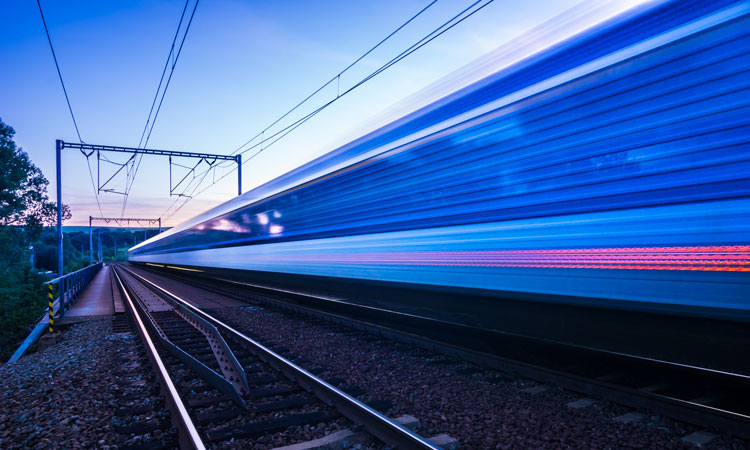A Q&A with: Christian Chavanel, Director – Rail System Department, UIC
Posted: 18 November 2019 | Global Railway Review | 1 comment
At Global Railway Review’s Digital Rail Revolution 2019 conference, Christian Chavanel, Director of the Rail System Department at the UIC, took time to share with us his opinions on future rail development and how the railway sector ‘must accelerate its own cycle of innovation’.


Why is it important for the industry to explore alternative communications capabilities to support the railway of the future?
Railway operators have established a list of more than 50 communication applications they need in the future, including critical applications for and the safety of train movements, performance applications for operational activity, and business applications such as wireless internet for passengers.
In this context, of course we need alternative communications capabilities. Current capabilities are not yet enough.
Do you think 5G deployment is achievable for the railway sector?
In my opinion, the railway sector must avoid a ‘5G-R’ and must convince the international standardisation organisations to consider railway requirements in their future 5G standards.
To me, this is possible and, as such, we are working with the European Telecommunications Standards Institute (ETSI) and with the International Telecommunication Union (ITU) to advance these developments.
Has there been a standout project to have pushed the use of digital technology in rail that you have admired, and why?
I am very impressed by the Digital Railway programme in Great Britain, which is helping the rail industry transform the country’s rail network for passengers, business, and freight operators by deploying modern signalling and train control technology.
I am very impressed by the Digital Railway programme in Great Britain, which is helping the rail industry transform the country’s rail network for passengers, business, and freight operators by deploying modern signalling and train control technology. This in turn will increase capacity, reduce delays, enhance safety, and drive down costs.
I think the Digital Railway programme is a very pragmatic and holistic approach; it considers different use cases, establishing of a business case for each and then ensuring the right data is collected for each use-case. The data then allows sensors to be placed correctly and how to set up data exchanges.
I think Britain’s Digital Railway programme is creating a real change for the railway management system – including financing of projects, governance of projects, and staff training.
To what extent do you think rail is under threat by other modes of public transportation and what can rail do to safeguard its future?
The UIC is keen to showcase that the world’s various railway networks are absolutely necessary to offer freedom of mobility, establish economic growth, and respond to climate change challenges when considering railways as the backbone of land transportation.
Of course, in the short-term, other modes of transport will try to compete with our railways, but, in the long-term, railways will become the backbone of an integrated multimodal transport system.
Competition between different modes of public transport is not an issue; but competition between public transport and the car, I believe, is the real issue.
What would you like to see change most within the rail industry over the next five years?
The railway sector must integrate major technical breakthroughs, including automation, digitalisation, artificial intelligence (AI), and cyber-security. At the same time, the railway sector must accelerate its own cycle of innovation.
The railway sector must integrate major technical breakthroughs, including automation, digitalisation, artificial intelligence (AI), and cyber-security. At the same time, the railway sector must accelerate its own cycle of innovation.
The solution is a modular architecture of the railway system, based on the principle of the internet network, allowing more data exchanges between the different modules, and allowing module replacements based on plug-and-play modes.
To succeed in such a revolution, the railway sector needs to work even more closely together and be less fragmented.
Related topics
5G, Artificial Intelligence (AI), Cyber-Security, Digitalisation









The focus has been on improving communications with Container owners, operators and networks. However there are overwhelming service and economic issues which are currently barriers to the growth of internal container traffic in UK; probably also elsewhere.
Large, slow terminals located long distances from sources and destinations create economic problems and end-to-end journey time issues.
Road transport is usually much slower and more expensive than rail. This means that end-to-end times are often/usually noncompetitive with all-road solutions for internal transits. It also means that road/rail/road solutions are more expensive.
Long container trains are also part of the problem, with less-frequent deliveries and once-again longer real end-to-end times.
The use of shorter, faster trains, serving more smaller, simpler, leaner terminals closer to sources and destinations could in many cases break through both cost and journey time barriers. Multiple drops/pickups could also form part of this mix.